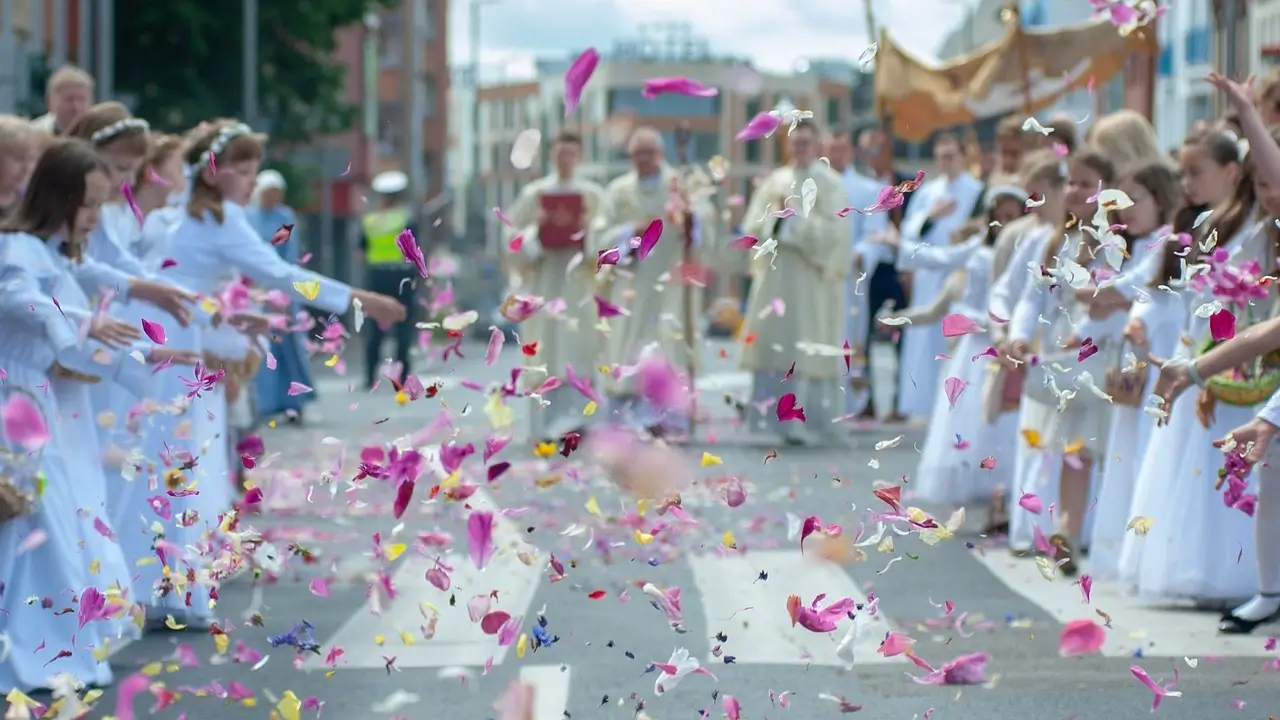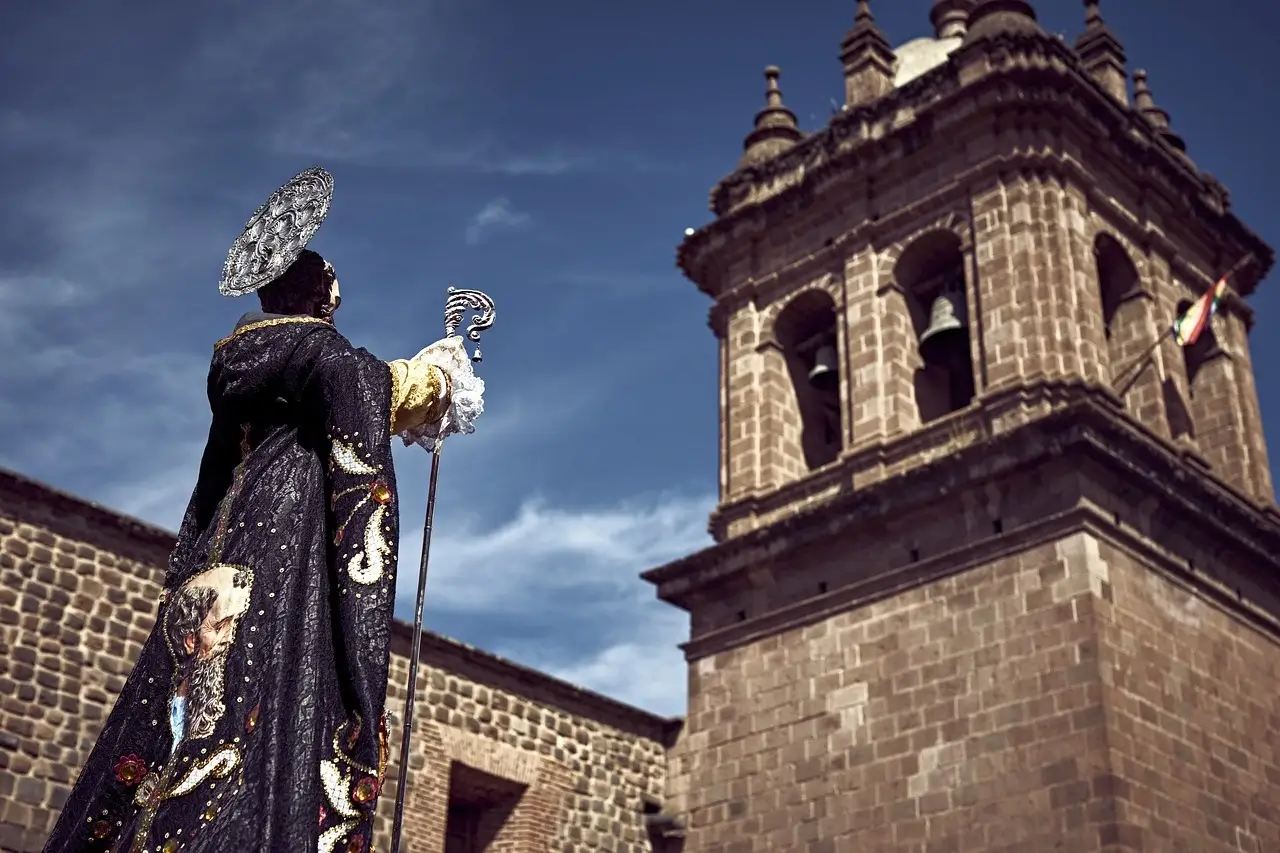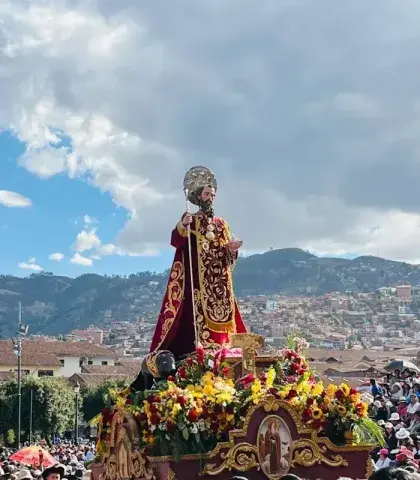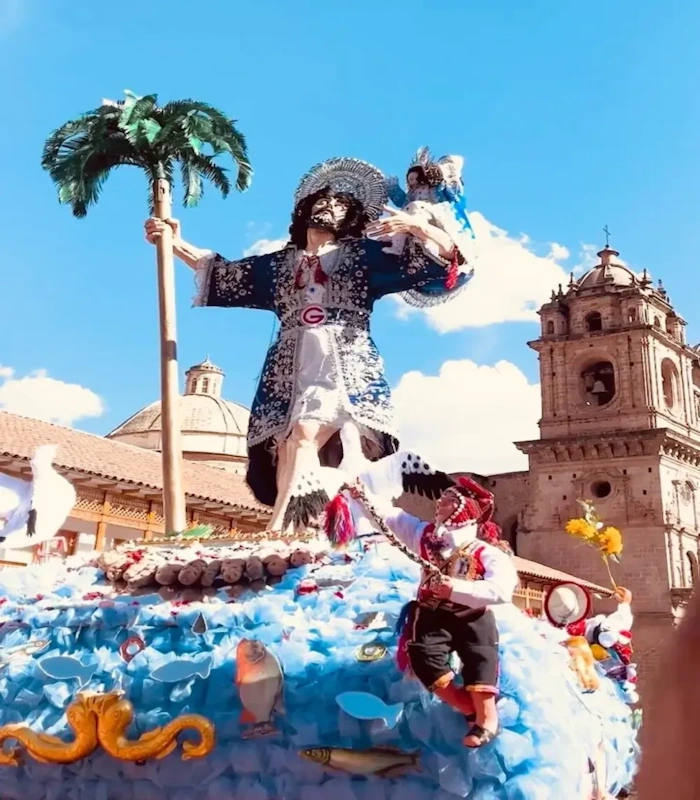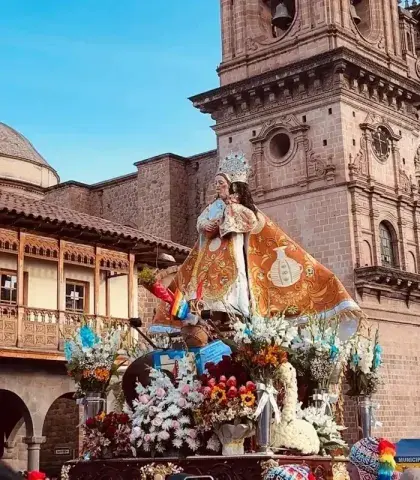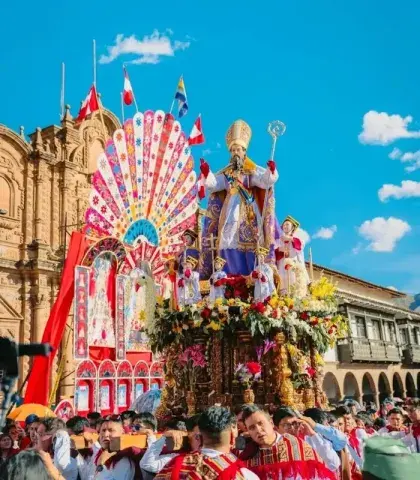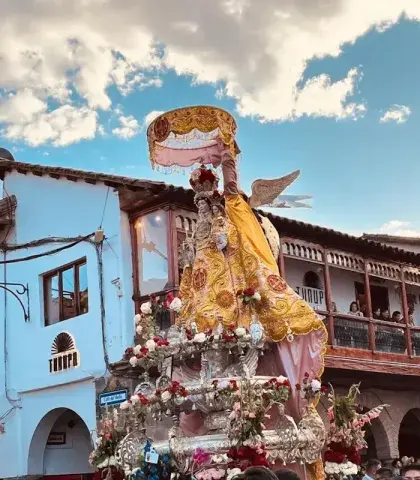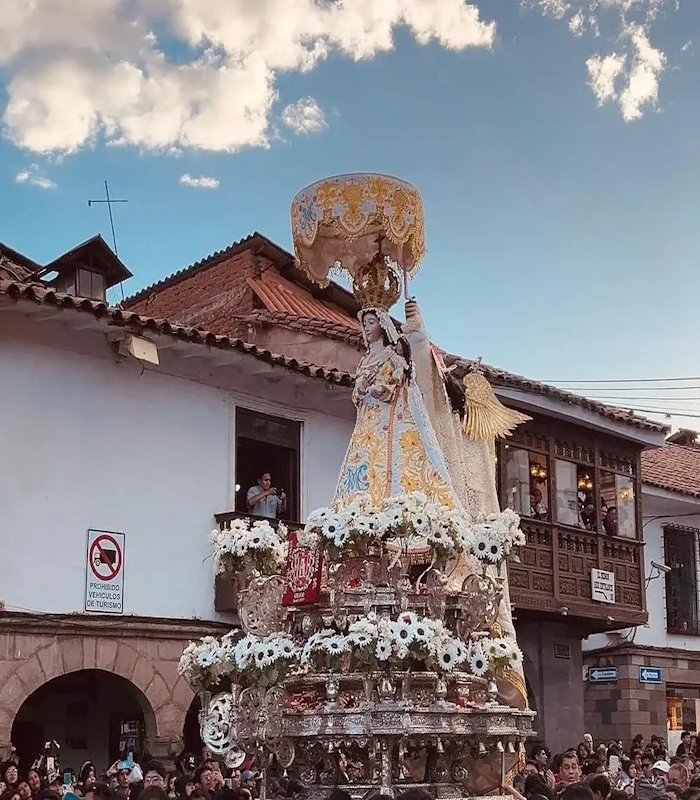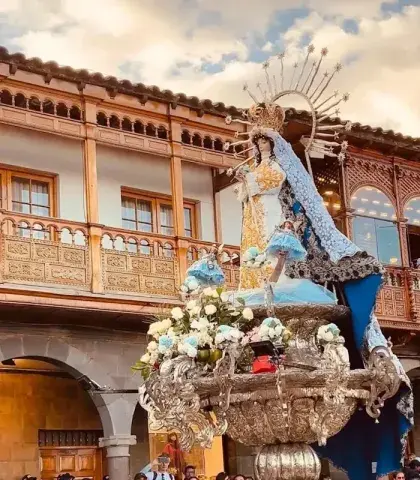Corpus Christi in Cusco, Peru, is one of the most emblematic festivities, recognized as the Cultural Heritage of the Nation since 2004. This celebration, which combines the rich Andean heritage and colonial traditions, takes place on the ninth Thursday after Easter Sunday, filling the streets of Cusco with a vibrant mix of faith, culture, and gastronomy.
In this blog, we will explore the history of this festivity, the impressive procession of saints and virgins, and the delicious gastronomy that accompanies this event. Join us to discover why Corpus Christi in Cusco is a unique experience.
History of Corpus Christi in Cusco, Peru
The Spanish conquistadors, who arrived in Cusco in the 16th century, observed Inca ceremonies prior to the Inti Raymi, which involved the procession of the mummies of the Inca sovereigns, whose bodies the families meticulously cared for. The Catholic evangelization replaced these ceremonies with parades of religious images, such as virgins and Catholic saints.
This fusion of traditions gave rise to Corpus Christi, a festivity that combines elements of Andean and colonial culture. Historical accounts indicate that this transition marked the beginning of one of the main festivities of the Cusco calendar, where religious images, richly adorned, paraded in an impressive procession, honoring the Body of Christ and attracting the devotion of the faithful and the admiration of Peruvians and foreigners.
When is Corpus Christi celebrated in Cusco?
The religious festival of Corpus Christi in Cusco takes place on the ninth Thursday following Easter Sunday. This means that it occurs 60 days after Easter Sunday (the day when Christians celebrate the resurrection of Jesus). The celebration of Easter determines this date each year, typically falling between late May and mid-June. The Corpus Christi in Cusco 2024 took place on Thursday, May 30.
The Procession of Saints and Virgins
Wednesday: Entry of the Saints
This festivity begins on a Wednesday, when the traditional 'Entry of the Saints' takes place, symbolizing the arrival of 15 saints and virgins from various temples in Cusco and surrounding areas to the cathedral of Cusco.
These images will spend the night in the Cusco Cathedral before going out in procession on Thursday.
Cusco and its surrounding churches meticulously prepare, adorning their saints with fabulous clothing. The procession of the virgins and saints is a ceremony of great beauty and emotion that combines music, dance, joy, and a lot of color to pay tribute to the Body of Christ.
Corpus Christi Thursday
On Corpus Christi Thursday, the archbishop celebrates a mass at the cathedral's entrance. The procession begins after the Mass around midday, headed by a silver chariot carrying the custody, followed by the 15 saints and virgins, accompanied by faithful and typical music bands of the region. The procession stops in front of the altars before returning to the cathedral.
In the afternoon, the images receive a blessing before returning to the cathedral, where they will rest for a week until the "Octava de Corpus," which is when the saints and virgins begin their return to their respective churches or temples.
Which saints participate?
Next, we will introduce you to the 15 saints and virgins who participate in the procession and the order in which they parade:
Traditional Dish During Corpus Christi in Cusco: Chiri Uchu
During Corpus Christi in Cusco, the sale of chiri uchu, a typical dish that accompanies the Corpus Christi celebrations in Cusco, fills the San Francisco square and its surroundings with delicious aromas and flavors. In Quechua, it means cold chilli or cold food; chiri refers to cold, and uchu to food.
The public present demands this exquisite combination of baked guinea pig (cuy), seaweed, fish roe, parboiled chicken, dried meat, chorizo, corn tortillas, fresh cheese, rocoto, and roasted corn. In addition to chiri uchu, other traditional dishes such as baked guinea pig, stuffed rocoto, and adobo cusqueño are offered. These delicacies reflect the culinary richness of Cusco and perfectly complement the religious festivities of Corpus Christi.
Corpus Christi in Cusco is a unique experience that combines religious devotion with Andean cultural richness. Visiting Cusco during this festivity is an excellent opportunity to live an ancestral tradition and create unforgettable memories. So if you have the opportunity to visit Machu Picchu and Cusco on this date, do not miss the opportunity to witness and be part of this festival that captivates all local and foreign visitors.
- Get to know more about the Festivities and Holidays in Peru in our blog.
Corpus Christi in Cusco is a unique combination of strong religious devotion and rich Andean culture, highlighting the city's diverse traditions and history. From the magnificent procession of saints and virgins to the tantalizing fragrances of traditional cuisine like as chiri uchu, this event provides a memorable experience that connects tourists to Peru's spiritual and cultural center. Attending this event, whether to see the parade or to taste local foods, allows you to immerse yourself in Cusco's rich past.

